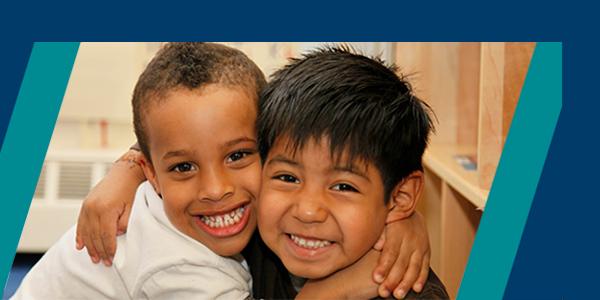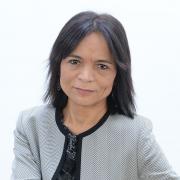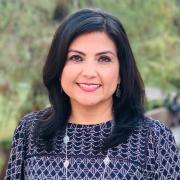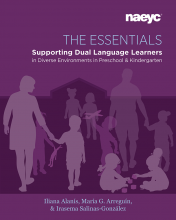The Essentials: Supporting Dual Language Learners in Diverse Environments in Preschool and Kindergarten

About the Book
-
Discussion of a key concept from a developmental and asset-based perspective that focuses on the role of a child’s home language and their family in the educational process
-
Examples of children’s and teachers’ experiences within an educational context
-
Idea Boxes that provide practical ways for educators to apply their understanding in practice
-
Definitions of key terms
-
Answers to frequently asked questions
-
Connections to NAEYC Early Learning Program Accreditation Standards
Table of Contents
- Acknowledgements
- About the Book
-
Part 1: Understanding the Essentials
- Chapter 1: Who Are Your Dual Language Learners?
- Chapter 2: What Does It Mean to Develop Two Languages?
- Chapter 3: What Should I Consider When Implementing a Dual Language Program?
-
Part 2: Supporting Learning and Development
- Chapter 4: Creating Culturally and Linguistically Diverse Environments for Dual Language Learners
- Chapter 5: Understanding and Facilitating Play
- Chapter 6: Developing Bilingualism and Biliteracy Across the Content Areas
- Chapter 7: Learning Through a Second Language
- Chapter 8: Designing Authentic Assessment
- Chapter 9: A Glimpse into Ms. Rocha’s Classroom: An Integrated Lesson
- Additional Resources
- Glossary
- About the Authors
- Index
Sample Syllabus with Activities
To access a sample syllabus with activities connected to each chapter, please complete this form. You'll be able to download the syllabus after you complete the form.
Book Details
ISBN: 978-1-938113-81-9
Publish Date: 2021
Related Resources
Articles
"Discovering How Writing Works in Different Languages: Lessons from Dual Language Learners" - In this article, Cristina Gillanders and Lucinda Soltero-González discuss how educators can use a strengths-based perspective that values what dual language learners already know to support them on their journeys to bilingualism and biliteracy. (Young Children, May 2019)
Blog
"New Research on Dual Language Learners: Support Children in Learning Both Languages" - Karen Nemeth explored the findings of Linda Espinosa's new report, Challenging Common Myths About Young Dual Language Learners: An Update to the Seminal 2008 Report.
For Families
"Reinforcing Language Skills for Our Youngest Learners" - Claudina Hannon shares tips for families to help support their children's language development.
Iliana Alanís, PhD, is a professor of early childhood/elementary education at the University of Texas-San Antonio. A native of the Rio Grande Valley, she has been working with and learning from dual language teachers for over 20 years.

María G. Arreguín, EdD, is an associate professor of early childhood and elementary education in the department of interdisciplinary learning and teaching at the University of Texas–San Antonio. She earned her doctoral degree in Bilingual Education at the Texas A&M University–Kingsville. Her research on dual language education, early childhood education, dyad learning and dialogue, and critical science pedagogy illuminates the intricacies of cultural and linguistic factors that influence minority children’s access to education in early childhood and elementary bilingual settings.

Irasema Salinas-González, EdD, has been a bilingual-early childhood education professional for more than 30 years as a teacher of children in preschool and kindergarten, college students, and in-service teachers.

Reviews
Comprehensive, well-researched, and well-organized . . . this book is reflective of the authors’ deep knowledge of young dual language learners (DLLs) that comes from their own experiences, studies, and myriad opportunities to engage with DLLs in schools. This book is a must-read for administrators and teachers seeking educational guidance that esteems the languages and cultures of the children they serve.
—Lisa Tabaku, Director, Global Languages and Cultures Education, Center for Applied Linguistics
In this timely and reader-friendly book, the authors present important guidance to early childhood educators on how to create additive bilingual education learning experiences and classroom environments for young bilingual learners. The book offers practical perspectives and developmentally appropriate practices that promote and celebrate young dual language learners’ linguistical and cultural assets.
—Sonia W. Soltero, PhD Professor and Chair, Department of Leadership, Language and Curriculum, DePaul University
This book provides educators with a comprehensive overview of dual language education and how to best meet the educational needs of dual language learners. The book is an excellent resource because it gives tools and strategies to guide emerging dual language educators.
—Rebecca A. Heneise, Dual Language Demonstration Teacher, UCLA Lab School
This book is a celebration of children particularly those who are blessed to be learning two languages simultaneously. Focusing on the strengths and assets of dual language learners and their families, this book applies the principles of dual language to early childhood contexts offering concrete and assets-based guidance for schools and teachers. The field has been clamoring for a book on early childhood dual language development for decades and this book fills that void. ¡Felicidades to the authors!
—Kathy Escamilla, Professor of Education, University of Colorado, Boulder
The Essentials: Supporting Dual Language Learners in Diverse Environments in Preschool and Kindergarten text truly is a comprehensive resource on dual language instruction. Readers are provided with easily implementable ideas and teaching strategies that support all children, especially dual language learners. Resources are solidly grounded in foundational research about language acquisition. This text is a must-read for early childhood educators.
I wish that I had this text when I first began my career as an early childhood educator. Though I am now well into my career, I found myself learning new concepts and getting ideas for innovative ways to create a classroom that honors cultural and linguistic diversity. This text highlights strategies that are not only best practice for dual language learners, but for all children.
—Laura Latta, Adjunct Professor of Early Childhood Education, University of Oklahoma Jeannine Rainbolt College of Education
